If you have recently suffered an injury and are wearing a cast, you might wonder if it is possible to travel by air.
Flying with a cast requires careful consideration, whether you have a broken leg, arm, or body part.
This article will address common concerns and provide helpful information on whether you can fly with a cast.
Flying with a cast is generally possible, but there are certain factors to consider depending on the type of cast and the airline’s policies.
Before traveling, it’s always best to check with your doctor and the airline.
Remember, each case is unique, and you must consult with your doctor and the airline to get specific advice based on your condition.
Taking the necessary precautions and ensuring proper clearance allows you to enjoy your travel experience despite having a cast.
What Is A Cast?
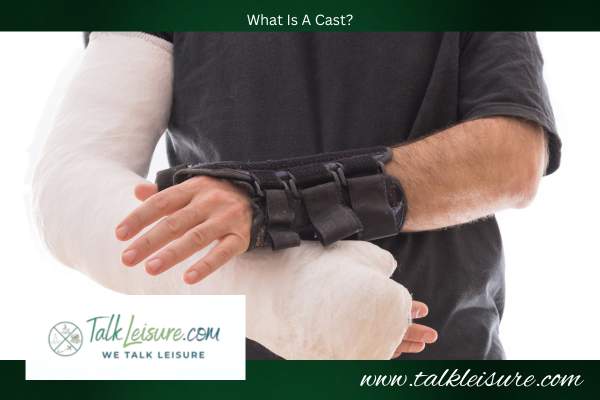
A cast is a hard, protective covering used to immobilize and support a broken or injured bone during healing.
It is typically made from materials such as plaster or fiberglass and is applied by a healthcare professional.
Types Of Casts
There are different types of casts depending on the location and severity of the injury:
Arm Casts
Arm casts immobilize fractures and injuries in the arm, including the wrist, forearm, and upper arm.
These casts can be applied from the hand to above the elbow or to the shoulder.
Leg Casts
Leg casts immobilize fractures and injuries in the leg, including the foot, ankle, shin, and thigh.
These casts can be applied from the toes to above the knee or to the hip.
Body Casts
Body casts immobilize fractures and injuries in the torso and spine.
These casts provide support and stabilization for more severe injuries.
Cast Boots
Cast boots immobilize injuries in the foot or ankle.
These boots are made from a rigid material and often have a rocker sole to assist with walking.
What Are The Airline Policies For Flying With A Cast?
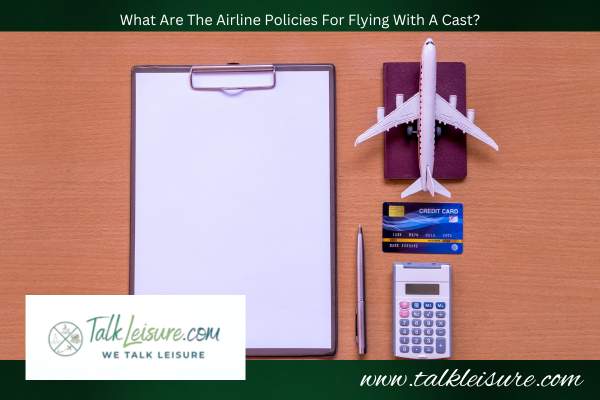
When planning to fly with a cast, it is important to understand the policies of the airline you will be traveling with.
While each airline may have slightly different guidelines, here are some general considerations:
Contact The Airline
It is recommended to contact the airline directly to inform them of your situation and inquire about any specific policies or requirements for flying with a cast.
Check Size And Weight Restrictions
Some airlines may restrict the size and weight of medical equipment or assistive devices, including casts. Ensure that your cast meets the airline’s requirements.
Security Screening
Security screening procedures may vary, but you can expect to undergo additional screening due to the presence of a cast. Be prepared for possible swabs or patdowns.
Comfort And Mobility
Consider your comfort and mobility during the flight.
Requesting an aisle seat for easier movement and legroom may be advisable, especially if you have a leg or body cast.
Accommodation For Cast
Some airlines may offer additional services or accommodations for passengers with casts, such as priority boarding or assistance with carry-on items.
Always check with your airline before your flight to ensure you have the most up-to-date information regarding their specific policies for flying with a cast.
How Long After Having A Cast Fitted Can You Fly?
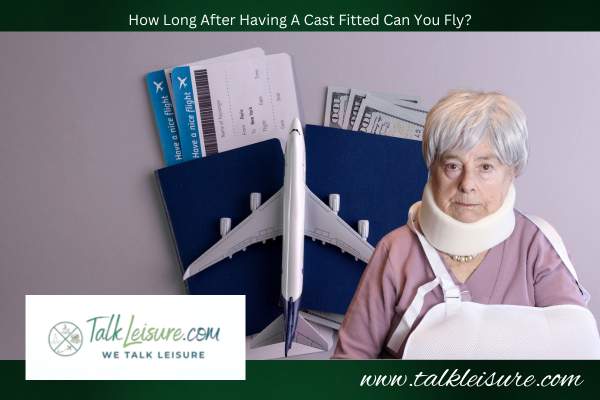
If you’ve recently had a cast fitted and are planning to fly, it’s essential to consider the healing process before making any travel arrangements.
A cast usually needs time to set and heal properly before flying safely.
It’s recommended to wait at least 48 hours after having a cast fitted before flying.
This allows the cast to harden and reduces the risk of complications during the flight.
However, consulting with your doctor or healthcare professional for personalized advice is important.
They will assess your specific injury and recovery progress to determine when it’s safe for you to travel.
Factors such as the type of injury, the location of the cast, and your overall health can influence the healing time and the recommended waiting period before flying.
Remember that following your doctor’s advice and ensuring the cast is adequately healed is crucial to minimize any discomfort or potential complications during your flight.
What Are The TSA Regulations For Flying With A Cast?
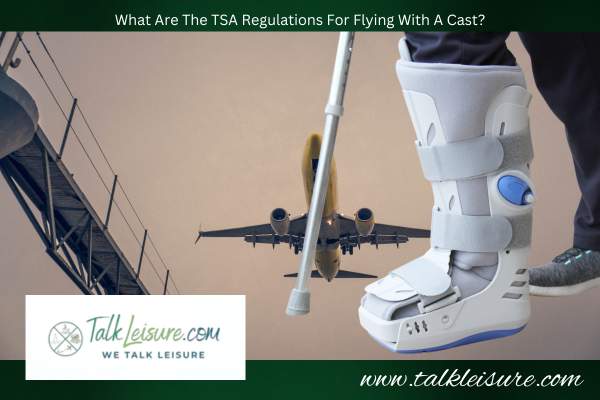
Knowing the Transportation Security Administration (TSA) regulations is important when flying with a cast.
These guidelines are in place to ensure the safety and security of all passengers.
You will be subject to a security screening through the TSA checkpoint.
This includes passing through a metal detector or full-body scanner.
You may also be required to undergo additional screening procedures, such as a pat-down or a swab test for explosive residue.
Inform the TSA officer about your cast before the screening process begins. They will provide you with guidance on how to proceed.
You can request a private screening for additional privacy during the process.
It’s important to arrive at the airport early, allowing ample time to go through security without feeling rushed or stressed.
Be patient and cooperative with the TSA officers to ensure a smooth screening experience.
For more specific information regarding TSA regulations and traveling with a cast, it’s advisable to visit the official TSA website or contact them directly for the most up-to-date information.
Why Is It Important To Inform The Airline About The Cast In Advance?

When flying with a cast, it’s crucial to inform the airline about your situation in advance.
Here’s why it’s important:
Seat Selection
Not all seats on the plane are suitable for passengers with casts. By informing the airline, they can help you choose a seat that provides more legroom and comfort to accommodate your cast.
Boarding And Deplaning Assistance
Airlines can assist with boarding and deplaning, which can be particularly helpful if you have limited mobility due to your cast.
They can offer support, such as a wheelchair or an escort, to ensure a smooth and comfortable experience.
Safety And Security
Airlines have specific protocols and procedures to ensure all passengers’ safety and security.
Notifying them about your cast in advance, they can make any necessary arrangements to ensure your safety during the flight.
If you are flying with Onewheel, it is best to pack it in a protective case.
Medical Clearances
Depending on the type of cast and the extent of your injury, airlines may require medical clearances or documentation before allowing you to fly.
You can avoid any last-minute complications or delays by informing them in advance.
Special Assistance
Airlines may offer additional assistance, such as priority boarding or extra legroom, to passengers with casts.
By informing them in advance, you can take advantage of these services and make your journey more comfortable.
What To Pack And Prepare For A Flight With A Cast?

When flying with a cast, being prepared and having the necessary things with you is essential.
Here’s a list of items to pack and things to consider:
Medications: Bring any necessary medications or painkillers prescribed by your doctor to manage any discomfort or pain during the flight.
Comfortable Clothing: Wear loose-fitting and comfortable clothing that accommodates your cast and provides easy movement.
Pillows Or Cushions: Bring small pillows or cushions to provide extra support and comfort for your casted limb during the flight.
Snacks And Water: It’s always a good idea to pack some snacks and a water bottle to stay hydrated and satisfy any hunger pangs during the flight.
Entertainment: Bring books, magazines, or any other entertainment to keep yourself occupied during the flight.
Stretching and movement: If possible, get up and walk around the cabin periodically to prevent stiffness and promote blood circulation.
Remember to follow the guidelines and recommendations from your doctor and the airline to ensure a safe and comfortable journey with your cast.
What Are The Tips For Traveling With A Cast?
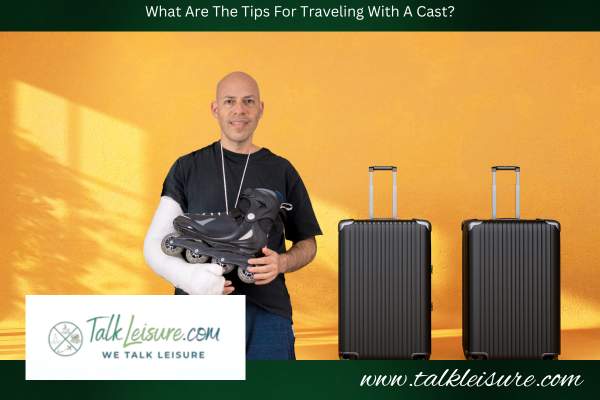
Traveling with a cast can present some challenges, but with proper planning, you can make the journey more manageable.
Contact your airline in advance to inform them about your condition. They may provide additional assistance or accommodations.
Allow yourself extra time to go through security and board the plane comfortably without rushing.
If you have difficulty walking, consider using crutches, a wheelchair, or a mobility scooter to navigate the airport.
Traveling with a cast can be more challenging when dealing with heavy luggage. Minimize your load by packing only essential items.
Don’t hesitate to ask for assistance from airport staff or consider hiring a porter to help you with your luggage.
Research and confirm that your accommodation and planned activities are accessible and can accommodate your needs with a cast.
Remember to consult your doctor before traveling to ensure safe flying with your specific cast condition.
Is There Any Insurance Coverage For Flying With A Cast?
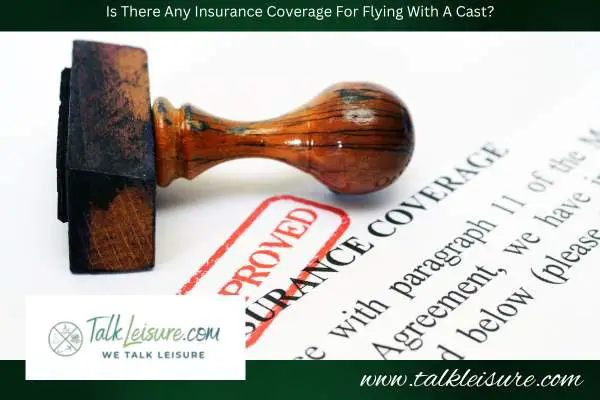
Regarding insurance coverage for flying with a cast, reviewing your policy and contacting your insurance provider is important.
Here are a few points to consider:
1. Travel Insurance:
Some travel insurance policies may offer coverage for unexpected medical expenses or trip interruptions due to a medical condition.
Review the policy terms and conditions to determine if your specific situation is covered.
2. Health Insurance:
Your health insurance provider may cover medical expenses related to your injury or condition, including any necessary medical treatments or consultations during your travel.
Contact your provider to understand the extent of the coverage.
3. Additional Coverage:
Some credit cards or membership programs may offer additional coverage for travel-related incidents, including medical emergencies.
Check with your credit card provider or membership program to see if any coverage is available.
It’s essential to thoroughly review your insurance policies and understand the coverage limitations and requirements before traveling with a cast.
This will ensure you are prepared and have the necessary protection in case of any unforeseen medical events during your journey.
Conclusion
In conclusion, flying with a cast is possible in most cases, but several important factors must be considered.
Before your flight, you must check with the airline to understand their specific policies regarding flying with a cast.
The type of cast and the extent of your injury will influence whether you can fly.
Some airlines may require a medical certificate or clearance from a doctor.
Swelling and discomfort during the flight can be managed by elevating your leg, taking pain medication if necessary, and wearing compression stockings.
It’s important to notify the airline and airport security about your cast to ensure a smooth and hassle-free experience at the airport.
Consider booking an aisle seat or requesting special assistance if you have limited mobility due to your cast.
Bringing essential items such as medications, extra padding, and any necessary medical supplies can help ensure a more comfortable journey.
While flying with a cast may present some challenges, adequate preparation and communication with the airline can help make the experience more manageable.
Remember to prioritize your comfort and well-being during the journey, and consult with your healthcare provider if you have any concerns.
Safe travels!
Related Posts: Can You Fly After Getting Lip Fillers?












